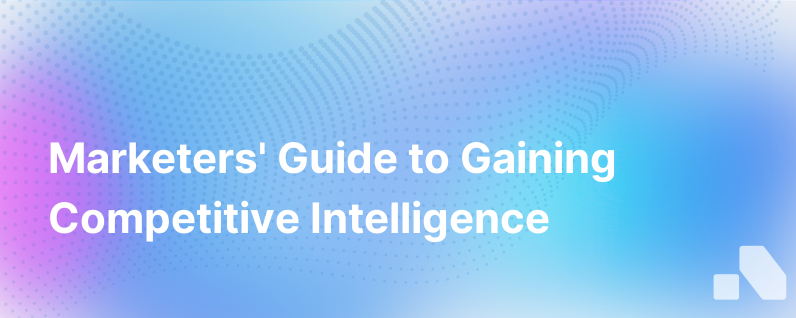Marketers Competitive Intelligence Guide
Published on January 8, 2024 by Sawyer Middeleer
Competition is inevitable, and the ability to anticipate and outmaneuver it can determine a company's success. In the world of marketing, real-time, actionable competitive intelligence enables companies not only to stay ahead but also to shape the industry's direction. In this comprehensive article, we explore what competitive intelligence means for marketers, why it's critical, and how to harness its power.
Understanding Competitive Intelligence
Competitive Intelligence (CI) refers to the process of gathering actionable insights about competitor companies, their activities, and market trends. For marketers, it provides an invaluable lens to understand the strategic movements, campaign activities, and messaging of competitors, and to inform their own strategies.
Why Competitive Intelligence Matters
To appreciate the importance of CI, consider the following points:
- Stay ahead of the curve: Understanding what competitors are doing enables companies to anticipate industry changes and shape their strategies accordingly.
- Benchmarking: CI provides markers against which companies can measure their own efforts and identify areas for improvement.
- Risk Mitigation: By keeping tabs on competitors' activities, companies can anticipate potential threats and respond in a timely and effective manner.
Key Areas of Competitive Intelligence for Marketers
CI focuses on different aspects, each delivering unique insights:
Product: Knowing your competitors’ product offerings allows you to enhance your own offerings in a way that differentiates you in the market.
Positioning: Understanding how your competitors position their brand can help you adjust your own messaging to stand out.
Pricing: Insights into rivals' pricing strategies can inform how you price your product or service and highlight value to customers.
Promotion: Study rivals' promotional strategies, from advertising and content initiatives to events and partnerships.
People: Identify key individuals driving your competitors' marketing initiatives. It can help understand the strengths and weaknesses of their team and tactics.
Steps to Gather & Utilize Competitive Intelligence
Gathering competitive intelligence is not a one-off activity; it's a continuous process that evolves with the ever-changing competitive landscape. Here’s a step-by-step guide:
1. Identify Competitors: List your direct and indirect competitors. Consider not only those in your exact industry but those that solve similar problems for your target customers.
2. Determine Key Information Points: Identify what information would be most valuable to your marketing strategies: positioning, promotions, pricing, etc.
3. Gather Information: Use various online and offline resources to gather data. These could range from competitor websites, social media, and online review platforms to industry reports and trade shows.
4. Analyze and Interpret: Analyze the collected data to glean actionable insights. Identify gaps, strengths, and weaknesses in your competitors’ strategies.
5. Implement Insights: Use your findings to craft stronger marketing strategies that help you stand out in the market.
6. Monitor and Update: The market is dynamic hence the need to monitor changes and update your CI.
7. Leverage Technology: Leverage competitive intelligence tools that enhance efficiency and accuracy in gathering and analyzing information. For example, Aomni's AI platform directly gathers real-time competitor data and turns it into actionable insights.
Best Practices for Using Competitive Intelligence
For CI to effectively inform your marketing strategies, observe the following best practices:
-
Make it a Team Effort: Encourage everyone in your organization to share pertinent competitor information. Various teams are likely to have different interactions with the competition.
-
Stay Ethical: Though the aim is to gain competitive advantage, always ensure that your intelligence gathering process stays within ethical and legal bounds.
-
Leverage Technology: Competitive intelligence tools like Aomni offer AI-powered solutions that turn information into actionable strategies at unheard-of speeds.
-
Communicate Insights: Regularly share insights with your team and stakeholders so you can act on your findings. Clear, concise communication is key in this step.
Conclusion
Staying proactive in gathering and utilizing competitive intelligence is a game-changer for marketing teams. By understanding what competitors are doing and how the market is evolving, you can craft more effective and timely strategies. Ultimately, competitive intelligence helps to build a competitive edge that enables your company to not just stay afloat, but to stand out and succeed. Whether you use traditional methods or adopt advanced AI platforms like Aomni, competitive intelligence should be a vital part of your marketing toolbox.